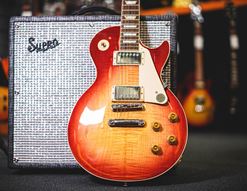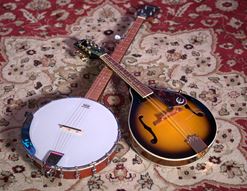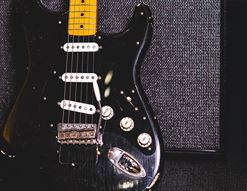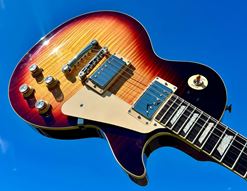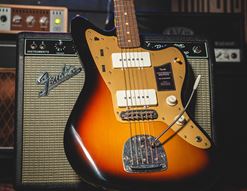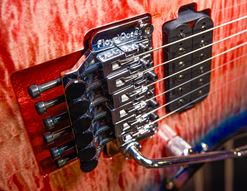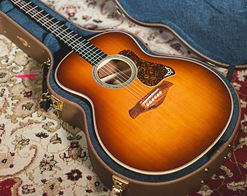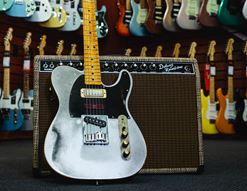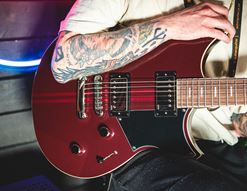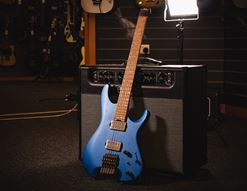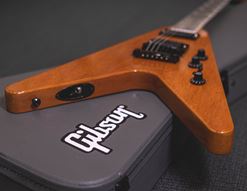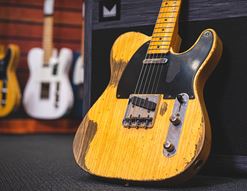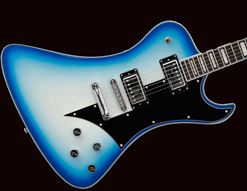Are you a fan of classic Gibson Les Pauls? If so, you’ll already know that models from the late 1950s are the most cherished and sought-after of them all. Original examples from this era are probably the most valuable non-artist-associated electric guitars in the world.
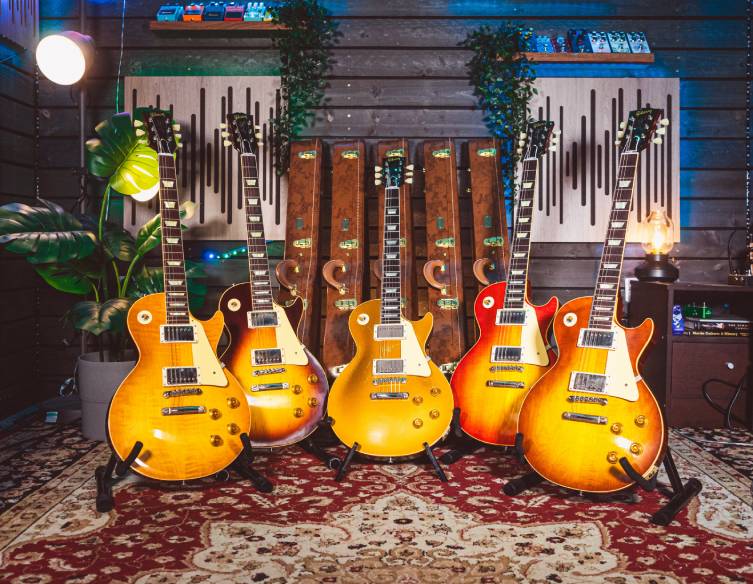
Because of their scarcity and value, most guitarists won’t even get to see one of these old vintage Les Pauls, far less be in a position to own one! This is something that Gibson understands, and it’s why their artisans at Gibson Custom now offer a range of unbelievable replicas. These top of the range guitars are absolutely the best of the best: the closest that any of us can get to those ‘Holy Grail’ Les Pauls from the 50s.
I’m going to talk you through the major differences between historic Les Pauls from 1957 and 1958 today, just to keep you briefed on the details. Care to join me?
Contents
1957 Les Paul Goldtop vs 1958 Les Paul Standard
1958 Les Paul Standard ‘Sunburst’
The ‘57 Les Paul vs the ‘58 Les Paul
Gibson Custom 1957 Les Paul Goldtop Darkback and 1958 Les Paul Standard
Impressive Takes on Classic Les Pauls
Fifties Les Pauls
- The most famous Les Pauls are from the 50s
- Humbuckers introduced in 1957
- Les Paul Standard Sunbursts last three years before being discontinued
Without diving in too deeply here, I’ll put us in some context. Gibson released the Les Paul guitar - a collaborative project with artist/inventor Les Paul - in 1952. The model I want to focus on is the Standard (it wasn’t called that in 1952 though), so I’ll leave the fancy Les Paul Custom of 1953 onwards for another time.
The Les Paul debuted with a fabulous gold finish, a set of single coil P90 pickups and a trapeze tailpiece which hovered over the body, held in place by the guitar strings. In truth, most of the Les Paul blueprint was there from the beginning, from the distinctive carved top to the trapezoid-shaped fingerboard inlays.
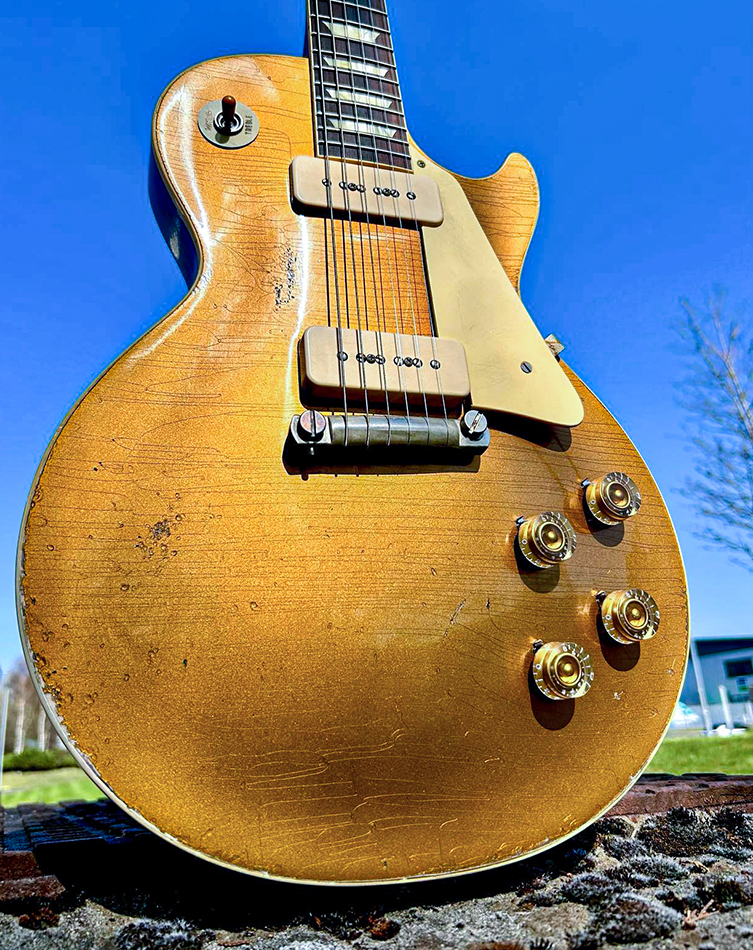
The next couple of years saw some changes, just prior to the period I want to focus on:
1953: the introduction of the one-piece ‘wraparound’ bridge/tailpiece instead of the trapeze.
1954: introduction of the Tune-o-matic bridge and stop bar tailpiece, pretty much as we know it today.
This brings us to 1957, which is where I want us to pull the brakes and get out of our car for a stretch!
1957 Les Paul Goldtop vs 1958 Les Paul Standard
- Translucent finishes instead of metallic gold is the main difference
- Maple cap always there on Goldtops and Standards
- Neck profiles change, but gradually
Now it’s time for us to look at the major differences - if indeed there are any - between Les Pauls from 1957 and those from a year later, in 1958.
1957 Les Paul Goldtop
The big change for Les Pauls in 1957 was the addition of humbucking pickups. The humbucking pickup was invented by Seth Lover in 1955 as a way to get the same sound as the P90 pickup, but without that attendant hum that invariably occurred with volume.
Yes, the Patent-Applied-For humbucker was always intended to sound like a P90, and good ones still do! Once humbuckers showed up, Gibson stopped offering Les Pauls with P90s. This period of the Les Paul is all about the PAF humbucker.
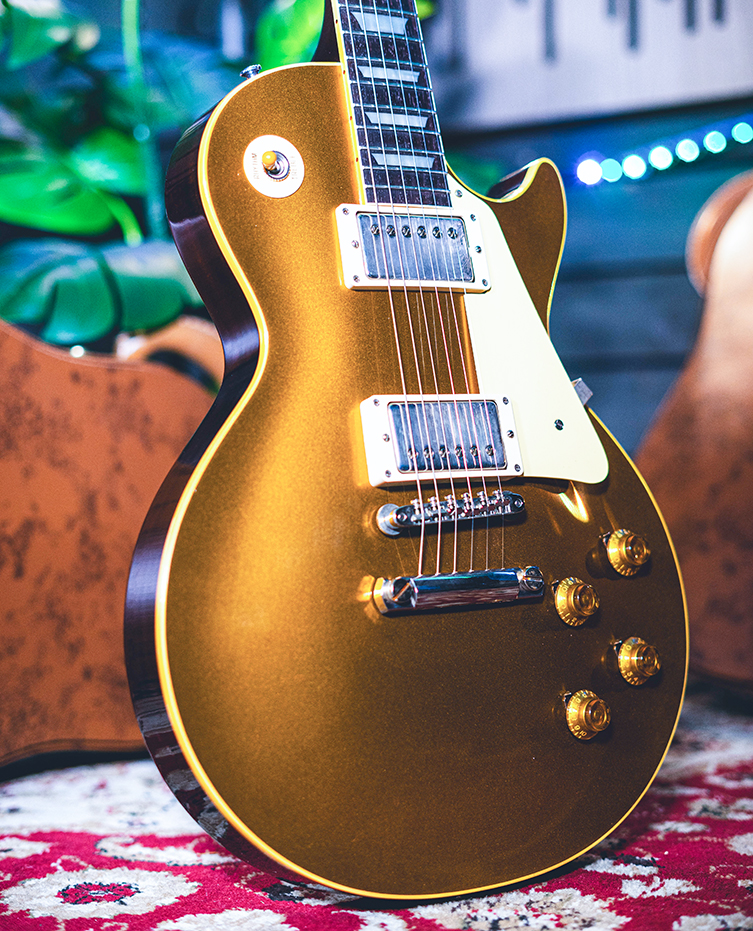
In 1957, the Les Paul was either a ‘Goldtop’ or a black Custom. Again, I’m not focussing on the Custom today, but it too gained the humbuckers and lost the P90s.
1958 Les Paul Standard ‘Sunburst’
1958 is when the famous sunburst Les Paul Standard model appeared. Les Pauls always had maple caps on their bodies (this was one of Les Paul’s ideas), but they were hidden until that rich metallic gold finish. The newly-named Les Paul Standard of 1958 made a feature out of the maple cap: the guitars were finished with a translucent ‘Sunburst’ finish that saw a rich Cherry red transitioning into an amber color. This showed off the pretty maple underneath and provided a look that was wildly different from the Goldtop. In 1958, most of these tops were ‘plain tops’, as opposed to obviously figured flame tops. There were a few, but these were more prevalent on 59 and 1960 examples.
The Goldtop was officially replaced by the Sunburst in 1958, but in reality, a tiny number of Goldtops were still built in 1959 to satisfy special orders.
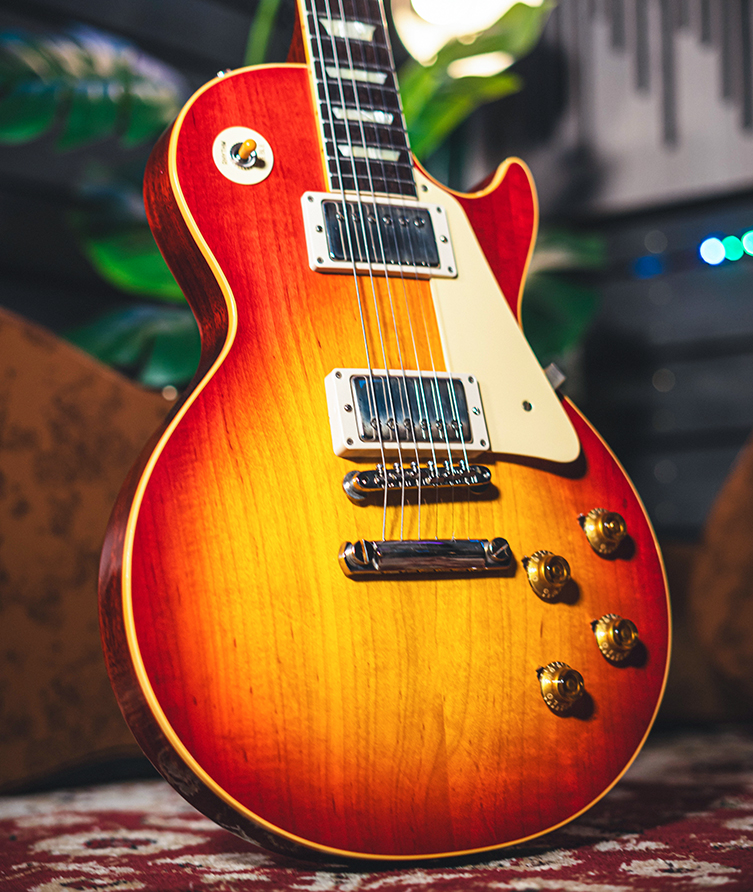
Fifties Neck Profiles
- 57’s were thick, 58’s were thicker
- 1958 neck carve considered biggest ever on a Les Paul
- It’s all relative
Nowadays, we are used to talking about a “59 neck carve” or a “slim 1960 neck profile”. These terms are historically true…up to a point. In the 57-58 time that I’m looking at, there was less difference in these profiles, though those from 1957 were generally not as thick as those from ‘58, and the 1958 necks were definitely thicker than those that followed. All Les Paul necks back then (and today, actually) were hard-carved, so each is unique to some degree. It’s not a ‘yearly spec’ as much as it is a gradual thing: Gibson builders didn’t change what they were doing at midnight on 31st December 1958 and start doing things differently!
It’s true that there was a trend to continually decrease the thickness of the neck as time went on, but never the width: they’ve always been (more or less) 43mm wide. The profile (thickness front to back) is what prompts descriptions like ‘thick’ and ‘clubby’ for ‘58 necks, and ‘slim’ or ‘skinny’ for ‘60 necks.
The ‘57 Les Paul vs the ‘58 Les Paul
So how do Les Pauls from 1957 compare with those from 1958?
It boils down to this:
- Maple cap on ‘57, plain or figured maple cap on ‘58.
- Metallic gold finish on ‘57, translucent Sunburst finish on ‘58.
- Thick neck on the 57’, thicker neck on the ‘58.
Once you get down to the brass tacks, those are the differences. Sonically, there shouldn’t be anything really noticeable there, apart from the minimal natural differences you’d expect from handwound pickups in a handwound guitar.
The neck profiles may make you play a little differently from one guitar to the next, but I don’t even think that applies: these are very similar instruments!
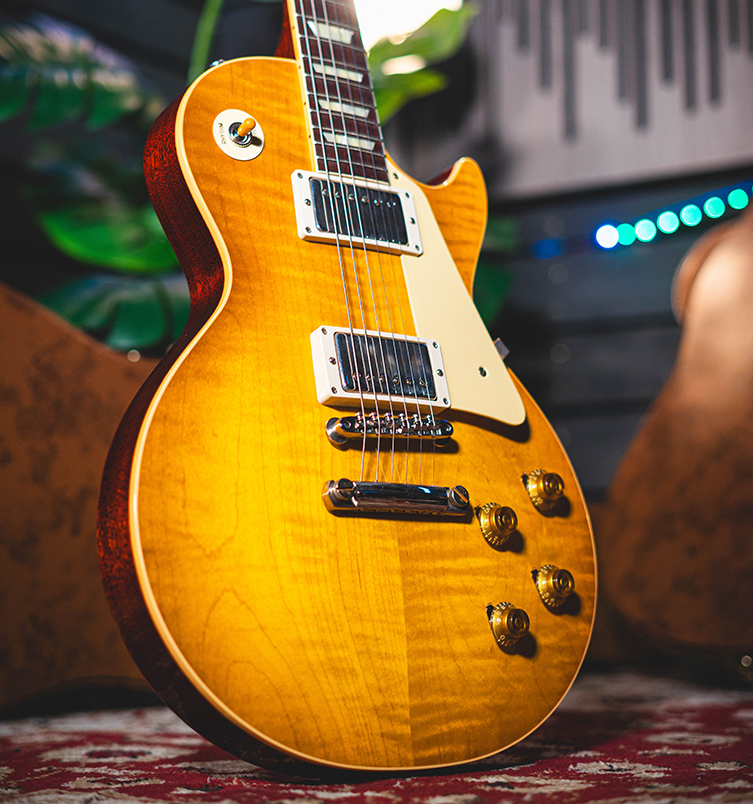
Gibson Custom 1957 Les Paul Goldtop Darkback and 1958 Les Paul Standard
Where are all of these comparisons leading, you might ask? Remember earlier, I mentioned Gibson Custom’s amazing renditions of these vintage guitars? Well, we currently have a couple of examples of each: a ‘57 Goldtop with a Darkback (more desirable to collectors) and the ‘58 LP Standard in a choice of bursts.
There’s no weight relief on these: they are full-weight mahogany with no chambers or Swiss-cheese inside them!
The pickups are custombuckers, individually wound to recreate that early PAF tone, bloom and sustain.
VOS (Vintage Original Spec) features mean that the headstock shape, body shape, thickness and detailing are as close to the original as possible. Even the formula for the plastic parts is meticulously copied from 1950s recipes!
A range of Burst finishes on the ‘58 Standard allow you to get the look you want. ‘Sunbursting’ was not as specifically dialled in back then, so variations in colour and graduation did happen, as did decades of sunlight and darkness! This is all reflected in our chosen bursts. Here’s what’s in this run:
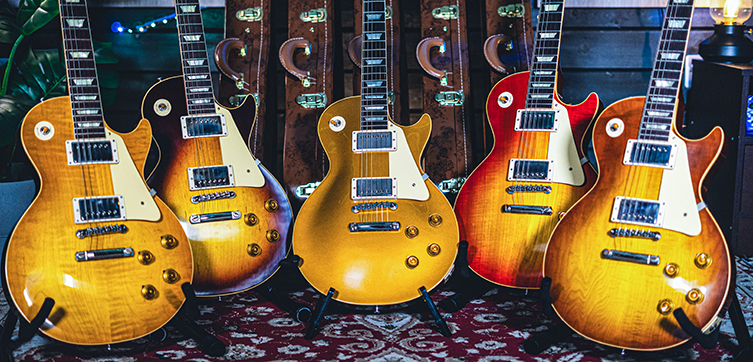
Left-Handed? Yes!
Now this isn’t strictly ‘inaccurate’, because we all know that Paul McCartney has a lefty ‘59 LP, (so late 50s lefties DID exist!) and yes, we DO have limited stock of left-handed Les Pauls from this collection! Numbers are understandably tight, so do get in touch to secure yours as quickly as you can, and avid disappointment!
Impressive Takes on Classic Les Pauls
This is heirloom stuff. Brand new guitars do not get better than this. Les Pauls do not sound, look or feel better than the guitars that emerge from Gibson Custom’s workshop. If you like the idea of having an exhaustingly accurate replica of a historically significant guitar, then you know what to do.
Click to View our Gibson Custom Les Pauls


